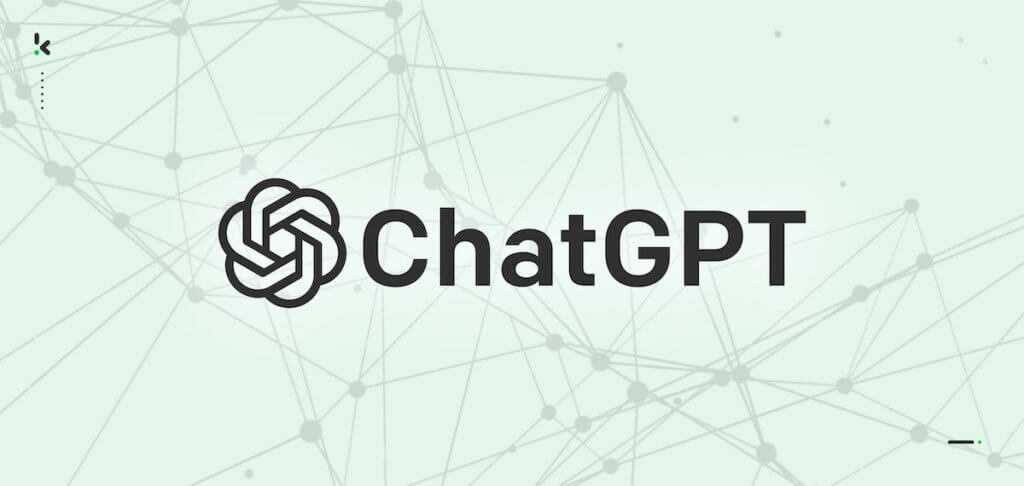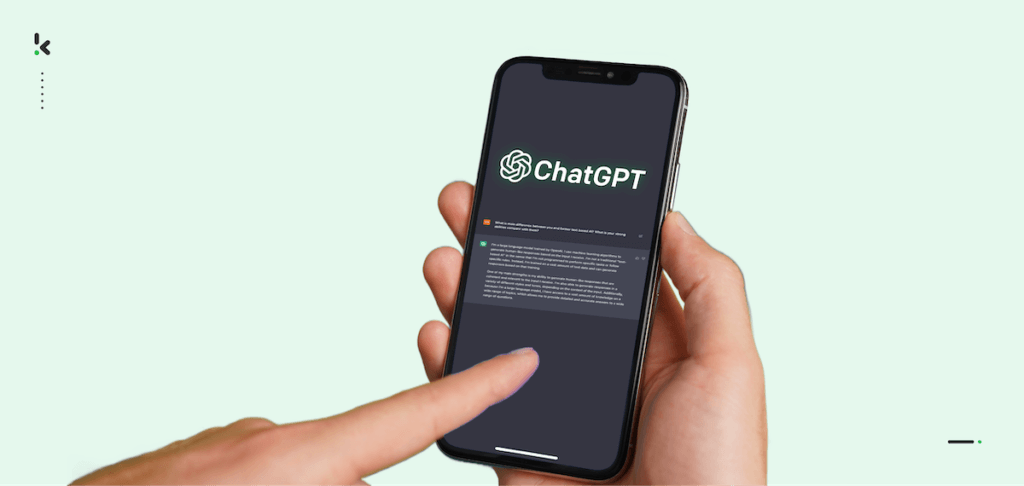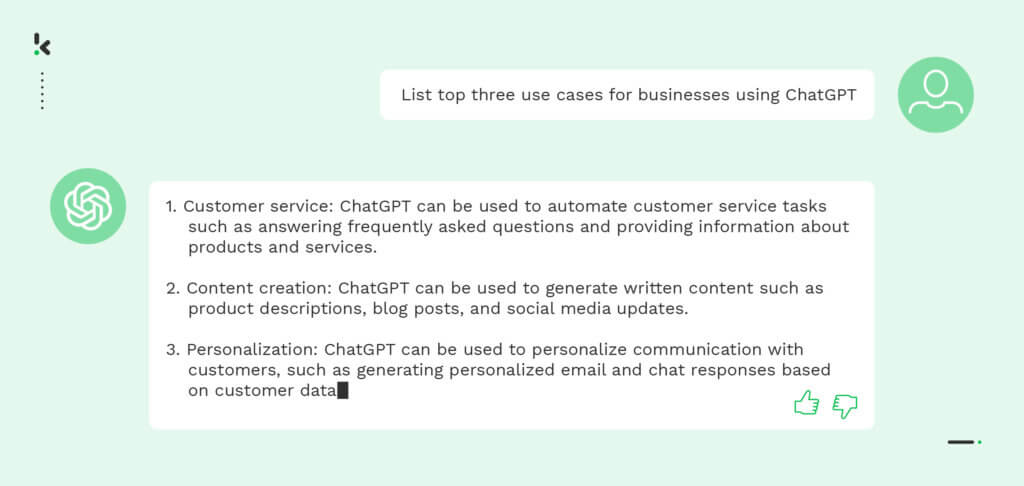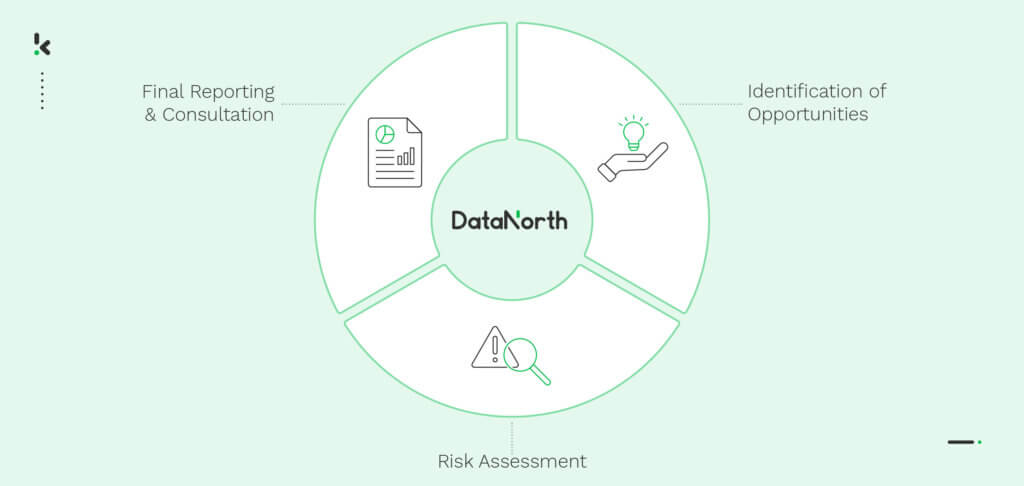

ChatGPT, the buzzword on everyone’s lips and the latest tech sensation. If you’re a business owner or an executive, you’ve very likely heard about ChatGPT, but you may not fully understand what it is and what it means for your organization.
If all the hype is to be believed, it has the potential to revolutionize the way you interact with customers and automate certain tasks (we will definitely show you some examples of that). But, as with any new technology, it’s important to understand the opportunities and potential risks that come with it.
This blog is designed to give you a comprehensive understanding of ChatGPT, and most importantly, how it can be used to drive growth and efficiency in your organization.
So sit back, relax, and let’s dive into the world of ChatGPT!
What is ChatGPT?
ChatGPT is a large language model developed by OpenAI that can generate human-like text in a conversational context and carry out simple tasks. It is based on GPT-4, which is the latest version of GPT models and known for its ability to generate text that is almost indistinguishable from human-written text.
ChatGPT is designed to generate natural language responses when given input from a user, making it potentially useful in a variety of business applications. For example, it can be used to answer questions, generate text and even code, and compose emails and essays. It’s like having your personal genie in a digital bottle, always ready to offer a helping hand.
Currently, ChatGPT has multiple plans to choose from. These are:
- Free plan; You can use ChatGPT for free, but use the GPT-4o limited with a fallback to the older GPT-3.5 model.
- Pro plan; $20 a month
- Access to all paid features, like GPT-4 Turbo and GPT-4o (low message caps), GPTs, Plugins and more.
- Team Plan; $25 a month, per seat
- Access to all paid features (with higher message caps).
- Data won’t be used for training .
- Ability to share GPTs privately across team members.
- Enterprise Plan; $60 a month, per seat
- Access to all paid features (no message caps).
- Higher speed GPT-4 Turbo and GPT-4o model
- Data won’t be used for training.
- Ability to share GPTs privately across team members.
- More ChatGPT security and privacy measures are being taken to protect your data.


How does ChatGPT work?
On the face of it, ChatGPT’s technology may seem simple. It takes your requests, questions, or prompts and quickly answers them. As you would imagine, the technology to do this is a lot more complicated.
The model was trained using a large dataset of text from various sources including books, web texts, Wikipedia, articles, and other pieces of text from the internet. To be precise, it was trained with a whopping 570GB of data, containing 300 billion words. This extensive training allows ChatGPT to understand and respond to a wide range of prompts and questions.
As a language model, ChatGPT works on probability, able to guess what the next word in a sentence should be. The model went through a supervised testing stage, where it was fed with inputs (e.g. what is the color of grass?) and correct outputs (green) to help it build its knowledge. This process, known as data annotation, was repeated endlessly to ensure the model’s accuracy.
The model also went through a second similar stage, where multiple answers were offered and ranked by a member of the team. This helped the model to learn from comparisons and further improve its understanding of prompts and questions. This approach of supervised testing and ongoing learning sets ChatGPT apart from other language models and makes it the ultimate know-it-all.
The limitations of ChatGPT
Despite its impressive capabilities and rapid adoption rate, it’s important to remember that ChatGPT is not a perfect technology. Below, we listed its most important limitations to help you make the most of ChatGPT and avoid common pitfalls:
- Not connected to the internet: ChatGPT does not have real-time access to the internet like a web search engine would. It was trained on a dataset with a knowledge cutoff of 2021, so it has limited information or knowledge about events or developments that have occurred after that date.
- Answers are not always correct: The answers generated by ChatGPT are not always correct, especially when dealing with complex or highly-specific questions. OpenAI itself also notes that ChatGPT sometimes writes “plausible-sounding but incorrect or nonsensical answers.”
- Limitations in training data and bias issues: Like many AI models, ChatGPT is only as unbiased as the data it is trained on. If the training data contains biases, the model will replicate them. This can lead to inaccuracies or inappropriate responses.
- Limited understanding of emotions: ChatGPT can generate text that is emotionally charged but it doesn’t understand the emotions behind the text. This can lead to inappropriate or insensitive responses. For example, it may not be able to respond to a customer’s complaint in a sensitive and empathetic way.
- Limited creativity: ChatGPT can generate text that is coherent and grammatically correct but it lacks the ability to generate truly creative content. For example, it may not be able to write a catchy slogan or a compelling ad copy.
- Stability and capacity issues: ChatGPT is a powerful tool but it has limits on the amount of text it can generate, especially when running on a shared server. This can lead to the server being down or unavailable at certain times. Most ChatGPT users will have seen the following screen more often than they would like…


Even though ChatGPT still has significant limitations, it has demonstrated suitability for many meaningful use cases and has stirred excitement in the business community. Let’s have a look at the main reasons why.
The opportunities for businesses
ChatGPT provides a vast array of opportunities for companies that harness its capabilities effectively. By automating repetitive tasks and providing more engaging interactions with users, chat-based AI can augment the way humans work.
Here are a few ways companies can make use of ChatGPT’s capabilities:
- Compiling research
- Creating content
- Brainstorming ideas
- Writing code and debug
- Automating parts of the sales process
- Delivering aftercare services
- Streamlining and enhancing processes using automation
- Translating text from one language to another
- Smoothing out the customer onboarding process
Compiling research
ChatGPT can assist with gathering and organizing data from various sources, providing quick access to relevant information. As a result, you can use ChatGPT to perform your own market research by analyzing and summarizing large amounts of data from surveys and reports. This can save you the costs of hiring a market research company.
Creating content
With its natural language generation capabilities, ChatGPT can help create content that resonates with your target audience. Although it lacks some creativity, a human can provide the creative spark and direction, while ChatGPT can handle the heavy lifting of generating a high volume of content. Together, the combination of human creativity and ChatGPT’s ability to generate text can make for an efficient and effective content-creation process.
Brainstorming ideas
ChatGPT can assist with generating ideas, by providing suggestions and inspiration. For example, a product development team can use it to generate a list of potential features for a new product, based on trends and customer feedback.
Writing code and debug
ChatGPT can assist with writing code, by generating code snippets and providing suggestions for improving the code. In doing so, developers can use it to generate code for specific tasks, such as data validation or error handling, and to identify and fix errors in existing code. This will save them a lot of time, which they can then spend on more meaningful and complex tasks.
Automating parts of the sales process
ChatGPT can assist with automating repetitive tasks in the sales process, such as sending follow-up emails or scheduling meetings. Your sales team, for example, can use it to generate personalized emails to prospects in a fraction of the time it would take to do it manually.
Delivering aftercare services
ChatGPT can assist with providing personalized instructions and assistance to customers after they have bought a product. This can be of great worth for customer service teams when formulating instructions for using a product, troubleshooting guides, and FAQs.
Streamlining and enhancing processes using automation
ChatGPT can assist with automating various tasks, such as data entry, to improve efficiency and reduce errors. This will not only save you a lot of time and money, but it will shorten turnaround times and increase customer satisfaction as well.
Translating text from one language to another
ChatGPT can assist with translating text, providing accurate translations in a matter of seconds. Do you make extensive use of translation services at the moment? Chances are, you won’t have to do so much anymore! Just use ChatGPT to generate a first draft and have it reviewed by a translator.
Smoothing out the customer onboarding process
ChatGPT can help guide new customers through the onboarding process by providing assistance and answering any questions they may have. For example, you can use it to generate customized onboarding emails, welcome messages, and FAQs for new customers.
In summary, ChatGPT can be useful for any situation where natural-sounding text needs to be generated based on input data. Companies that take advantage of its capabilities can improve their efficiency, enhance customer engagement, and ultimately increase their bottom line. To get more inspiration about how to use ChatGPT in your business, read our blog about ChatGPT use cases for businesses and read our blog about What is Prompt Engineering? to learn more about how to prompt ChatGPT.


Should you now rush into things and start using ChatGPT in every single operation? We don’t think so. It is crucial for you to weigh the potential benefits and risks of ChatGPT, and make informed decisions about its implementation in your operations. That’s why we’ll cover the potential threats next.
The potential threats to businesses
The potential of ChatGPT to drive innovation and improve efficiency for businesses across various industries is undeniable. However, as with any emerging technology, it’s crucial to be aware of its potential threats to your company. Below, you’ll find the most important ones:
- Businesses become obsolete
- Financial fraud
- Lack of accountability
- Privacy risks
- Dependency on the model
Businesses become obsolete
One of the biggest concerns about chat-based AI is that it has the potential to make certain businesses redundant or obsolete. For example, translation or content creation services may be affected by the rise of ChatGPT. As it can produce accurate translations and high-quality content in a fraction of the time it would take a human to do so, companies providing such services may get out of business.
Financial fraud
ChatGPT can also be used by cybercriminals to commit all kinds of fraud, ranging from business identity theft to invoice fraud. For example, criminals could manipulate people into disclosing sensitive information using the chatbot, and then use that information for fraudulent purposes or targeted phishing attacks. This can lead to reputational damage, financial losses, and legal liabilities for businesses.
Lack of accountability
ChatGPT, being an AI model, doesn’t have the ability to take responsibility for its actions. This can lead to problems when something goes wrong, such as providing incorrect or inappropriate information. It can be difficult for businesses to determine who is liable in these situations and how to mitigate the damage.
Privacy risks
ChatGPT is trained on a large dataset of text from the internet, which may include personal information. This can lead to privacy risks, such as the unauthorized disclosure of personal information or the creation of targeted advertising. Businesses need to be aware of these risks and take appropriate measures to protect personal information.
Want to learn more about how to protect your privacy with ChatGPT? Read our blog about ChatGPT & Data Privacy.
Dependency on the model
As ChatGPT is a machine learning model, it can only provide information that it has learned from the data it was trained on. If the model is not updated with new data, the information it provides may become outdated. Businesses may become dependent on the model and may not be able to operate effectively without it.
That’s quite a lot to digest, right? The bottom line is that you need to be aware of the potential threats of ChatGPT. By understanding them, you can make better-informed decisions about how to use the technology effectively and safely.
So far so good, but you may still wonder where to start. No worries, we will discuss the first steps to take next.
The first steps for executives
If you are considering the use of ChatGPT for your business, it’s important to identify the areas where the technology can have the most immediate impact and establish a system to monitor its development.
One effective step is to create a cross-functional team that includes data science practitioners, legal experts, and business leaders to consider the implications of ChatGPT for your business. This team can help you think through important questions such as:
- How might ChatGPT aid or disrupt your industry and/or your business’s value chain?
- What are your company’s current policies and approach toward AI? Should it vary across different areas of the business?
- Given the limitations of ChatGPT, what criteria should be used to select use cases for implementation?
- How can you build an ecosystem of partners, communities, and platforms to maximize the potential of ChatGPT?
- What legal and community standards should ChatGPT adhere to in order to maintain trust with stakeholders?
Meanwhile, it’s important to foster innovation within your organization by creating a safe environment for experimentation and providing guardrails for safe experimentation. This will help you stay on top of the rapid evolution of ChatGPT and the new opportunities that it brings.
How can Klippa DataNorth help you?
Exploring the possibilities of ChatGPT can be a daunting task for many companies, due to a lack of knowledge, time, focus, or a combination of the three. But with the right guidance, ChatGPT can be a powerful tool for businesses looking to automate tasks, improve efficiency and stay ahead of the curve in the fast-paced digital landscape.
To help companies navigate this complexity, Klippa DataNorth has set up ChatGPT consulting. With our consultation package containing three modules, businesses or organizations can uncover the potential benefits and uses of ChatGPT in their operations.
The three modules follow:
- Identification of opportunities: This module consists of a 1-week evaluation process with DataNorth experts in your company, an analysis of your current business processes, and an exploration of opportunities to automate tasks with ChatGPT.
- Risk assessment: Our experts will provide an evaluation of possible threats of using GPT, and a proper risk assessment using DataNorth’s AI Readiness model. Next to that, your organization’s data quantity and quality are assessed for safety measures.
- Final reporting and consultation: A comprehensive report will be provided based on the assessments, giving insights into possible use cases of ChatGPT. The final consultation will be provided with the report delivery.


Don’t hesitate to contact one of our experts to find out how ChatGPT can help your business thrive in today’s digital landscape.